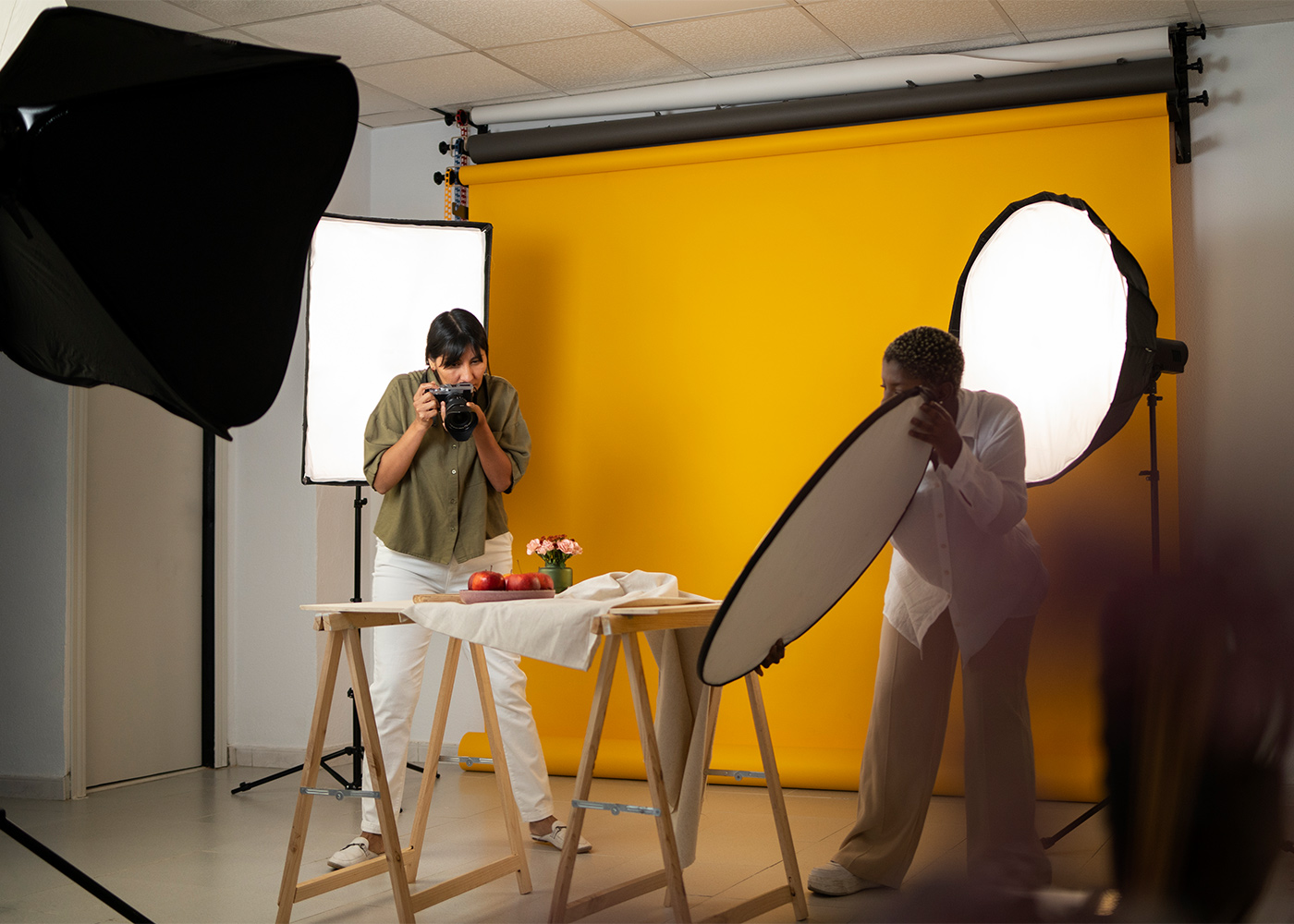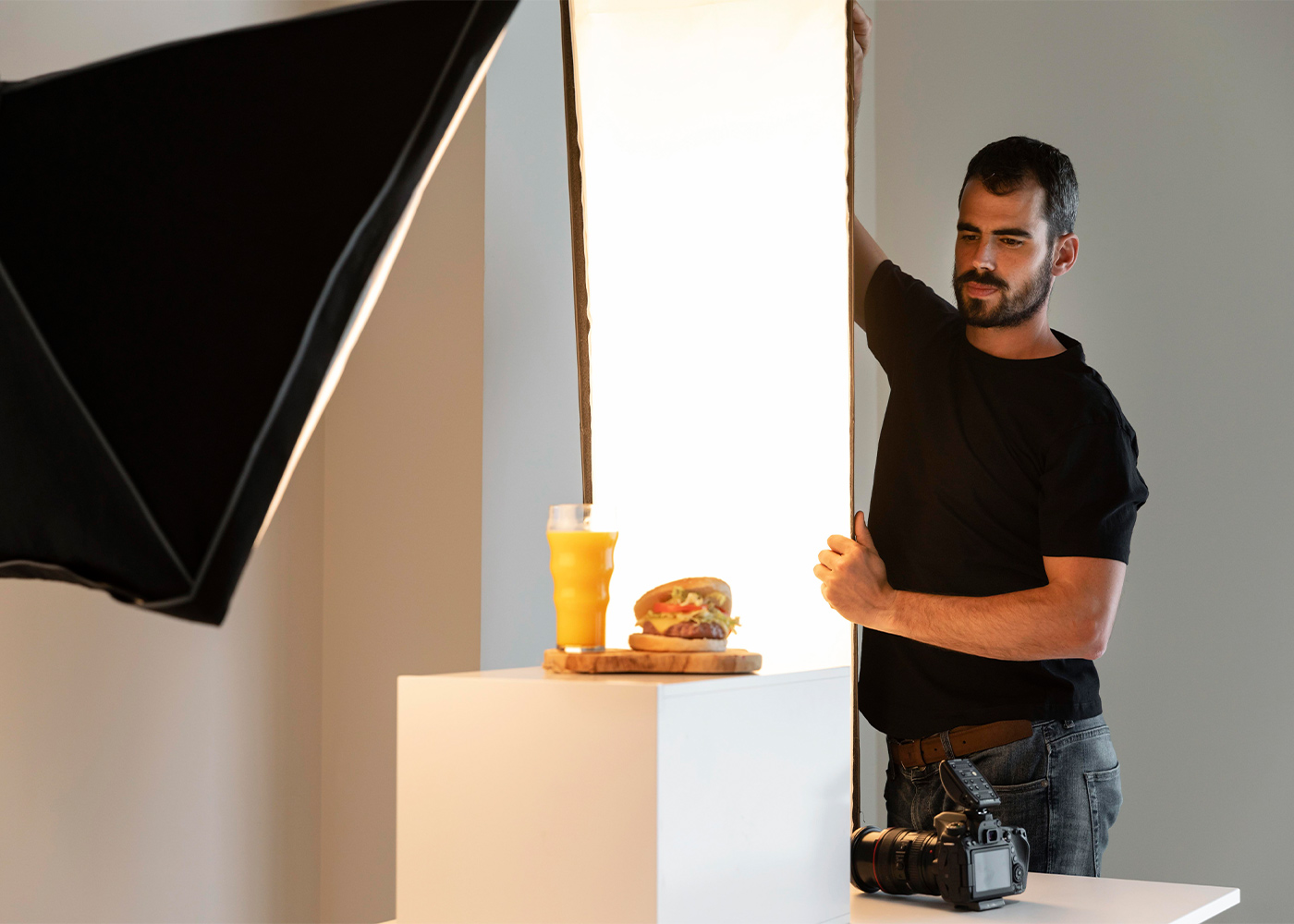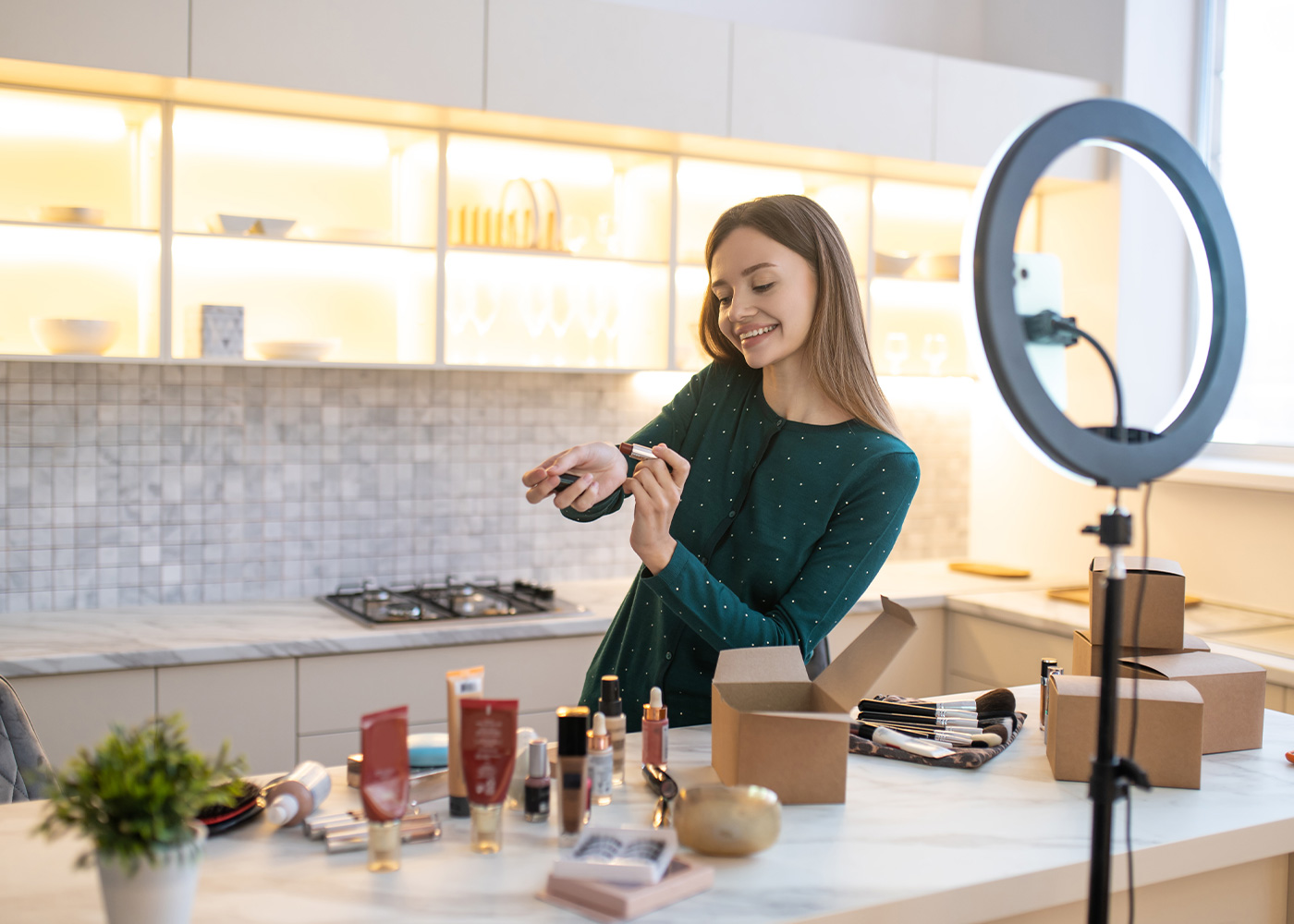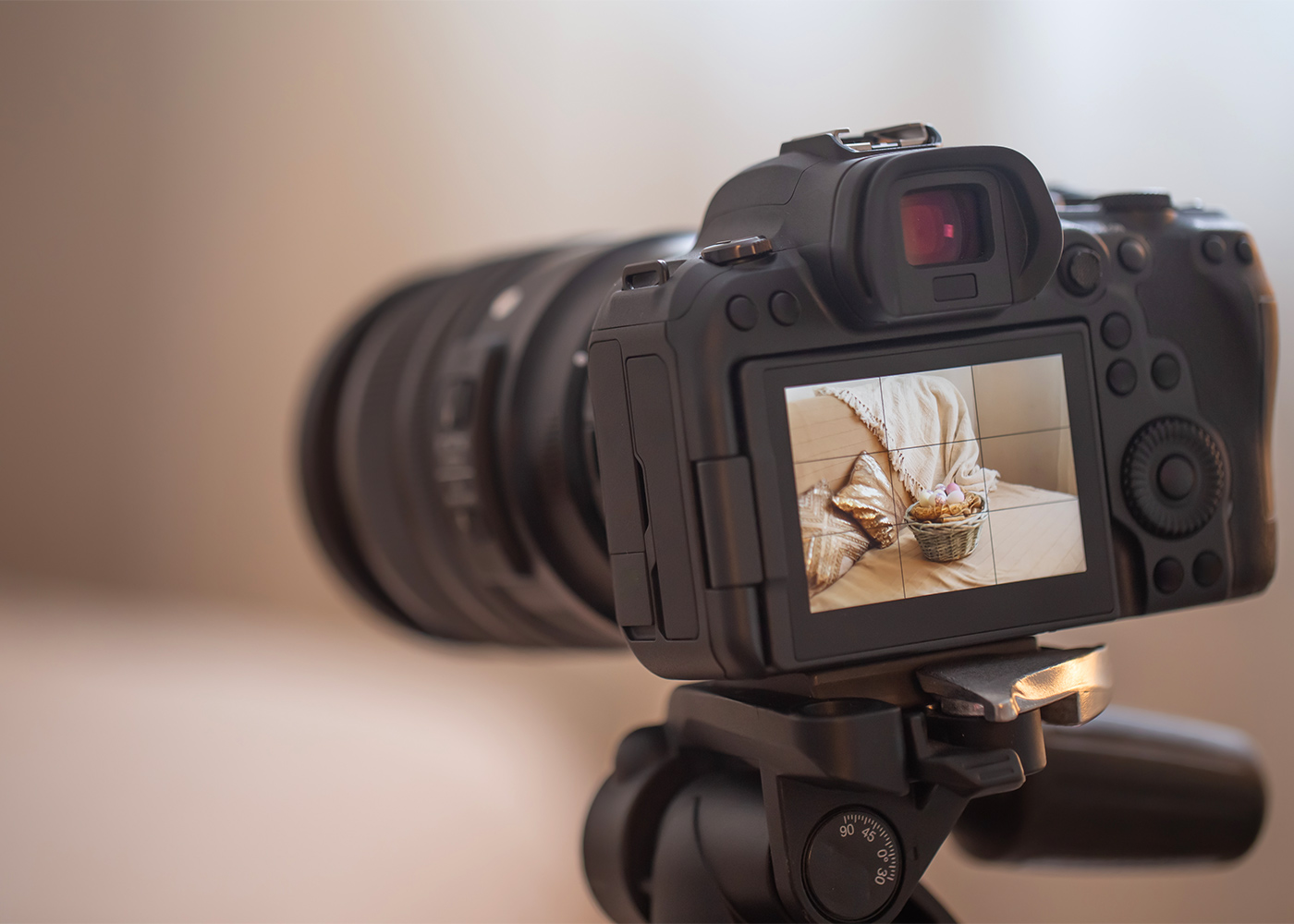All about commercial photography

Product photography is a specialized form of commercial photography centered around capturing images that make products look their best for promotional and marketing purposes. The main aim is to create visually appealing and enticing pictures that draw potential customers in and encourage them to make a purchase.
If you are looking for exciting ideas for creating advertising photos, be sure to visit the portfolio page of Studio NextShot.
Here are some key aspects to keep in mind when dealing with product photography:
-
Lighting:
Mastering the art of lighting is pivotal in product photography. The right lighting setup, which could include natural light or studio lighting, is essential to highlight the product’s details and characteristics accurately.
-
Background and Composition:
The background you choose plays a significant role in setting the product’s mood. A clean, distraction-free backdrop is often preferred to ensure the product takes center stage. The composition should be carefully thought out to showcase the product’s best features.
-
Camera Gear:
Employing high-quality cameras with interchangeable lenses is standard practice in product photography. The choice of lens depends on the product and the desired shot, whether it’s a macro shot to capture intricate details or a wider angle to provide context.
-
Styling and Props:
Creativity comes into play when selecting props and styling elements. These supplementary items should complement the product, adding to its visual appeal without stealing the limelight.
-
Post-Processing:
After the photoshoot, post-processing is used to fine-tune the images. This involves using software like Adobe Photoshop to adjust colors, eliminate imperfections, and enhance details, resulting in a polished final product.
-
Uniformity:
For brands with multiple products, maintaining a consistent visual style across images is crucial. This helps create a cohesive look and feel for the brand’s offerings.
-
Diverse Products:
Product photography covers a broad spectrum, ranging from everyday consumer items to high-end luxury goods. The approach may differ based on the unique characteristics of each product.
-
E-commerce Impact:
In the realm of online shopping, captivating product images are indispensable. Clear, high-quality visuals can significantly impact online sales and customer satisfaction.
-
360-Degree Imaging:
To provide an interactive experience, some product photographers create 360-degree images or animations that allow viewers to examine the product from all angles.
-
Collaboration:
Successful product photography often requires collaboration among photographers, stylists, and clients to ensure the images align with the brand’s identity and marketing objectives.
Whether you’re a business owner seeking to showcase your merchandise or a professional photographer specializing in product photography, these principles and techniques will assist you in crafting captivating images that effectively convey the product’s appeal and allure.

Mastering Product Photography: A Step-by-Step Guide
Conceptualize Your Vision:
Embark on your product photography journey by crafting a visual mood board. Delve into a collection of images that resonate with the essence you wish to convey in your own photos. Analyze angles, prop arrangements, color palettes, and tones that captivate your imagination. These insights will serve as a compass when it comes to styling and capturing your images.
Define Your Objectives:
Outline your photographic requirements for each product. Create a comprehensive list, encompassing fundamental product shots showcasing diverse angles against a neutral backdrop, lively product images aligning with your brand’s personality, and contextual lifestyle shots that resonate with your audience.
Create Your Stage:
Devote your shooting day to refining your setup. Choose a time that bathes your scene in natural light. Arrange your shooting area, possibly near a spacious window, with backdrop materials and props strategically positioned. Secure items in place with Blu Tack or tape, ensuring your setup harmonizes seamlessly with your intended shots.
Capture and Recapture:
Evoke your inner photographer and begin capturing images. Embrace multiple takes of the same setup and angle, recognizing that perfection often requires iteration. Regularly pause to inspect your shots, evaluating lighting uniformity and the absence of shadows or overexposure. Scrutinize for potential distractions within the frame, contemplating if they can be rectified during editing.
Curate and Refine:
Embark on the curation phase, sifting through your image collection. Cherry-pick one or two images of each style for every product, emphasizing those that exemplify your products optimally. Assemble a harmonious ensemble by refining these selections. Employ accessible software on your computer or smartphone to adjust contrast, exposure, and crop distracting elements, ensuring visual consistency.
Tailor for the Digital Realm:
Elevate your images for online platforms. Prior to publication, ensure your images adhere to the proper aspect ratio and resolution for your chosen platform. Navigate varying size and specification requirements across different online spaces. Strike a balance between image quality and file size, enabling swift loading times. Further enhance searchability by assigning descriptive filenames to your images, facilitating discoverability through search engines.

Product photography boosts conversion rates for these reasons
The article discusses the significant impact of product photography on increasing conversion rates in e-commerce. It highlights several key points:
Visual Engagement: High-quality product images capture viewers’ attention and engage them instantly, encouraging further exploration.
Trust and Credibility: Professional product photography conveys a sense of trustworthiness, boosting the brand’s credibility and encouraging purchases.
Detailed Representation: Detailed images allow customers to closely examine product features, reducing uncertainty and facilitating informed decisions.
Emotional Connection: Effective product photography evokes emotions and aspirations, fostering a connection between the product and the customer.
Contextualization: Lifestyle photography situates products in real-life scenarios, helping customers visualize product usage and benefits.
Reduced Returns and Abandoned Carts: Clear images minimize misunderstandings, reducing returns, and lowering cart abandonment rates.
Branding and Consistency: Cohesive product photography strengthens brand identity, recognition, and loyalty.
Social Sharing: Engaging images are more likely to be shared on social media, potentially leading to viral exposure.
In conclusion, product photography serves as a crucial tool in enhancing conversions by visually appealing, informing, and emotionally resonating with potential customers in the e-commerce landscape.

Which cameras are favored by professionals for product photography?
Selecting the right camera for product photography depends on various elements, such as your budget, personal preferences, and specific needs. Here are several camera options often preferred for product photography:
DSLR Cameras: Digital Single Lens Reflex (DSLR) cameras are well-liked for their adaptability, interchangeable lenses, and capacity to capture top-notch images. Brands like Canon and Nikon offer an array of models suitable for product photography.
Mirrorless Cameras: Mirrorless cameras offer similar advantages to DSLRs but generally come in a more compact and lightweight form. Brands like Sony, Fujifilm, and Panasonic have produced outstanding mirrorless cameras that provide remarkable image quality.
Medium Format Cameras: These cameras feature larger sensors, resulting in even higher resolution and finer details. Medium format cameras are often chosen for professional studio product photography when exceptional image quality is of utmost importance.
Full-Frame Cameras: Cameras equipped with full-frame sensors deliver superior image quality and excel in low-light conditions. They are versatile and apt for various photography styles, including product photography.
Crop Sensor Cameras: Although not as large as full-frame sensors, crop sensor cameras still deliver good image quality and can be a more economical choice for product photography.
High-Resolution Cameras: Cameras with higher megapixel counts are advantageous for capturing intricate product details and producing larger images suitable for both print and digital advertising.
Tethering Capabilities: Cameras with tethering capabilities allow you to connect them to a computer for real-time image viewing and control. This proves especially valuable for studio product photography.
Wireless Connectivity: Some modern cameras offer built-in Wi-Fi or Bluetooth for seamless image transfer to your computer or mobile device.
Macro Photography Capabilities: For close-up shots of small products or delicate details, consider a camera equipped with macro photography features.
Video Capabilities: If you intend to create product videos or animations, a camera with excellent video recording capabilities is crucial.
It’s essential to recognize that while owning a high-quality camera is advantageous, other factors like lighting, composition, and post-processing also hold substantial sway in achieving exceptional product photography. Furthermore, investing in an assortment of quality lenses and accessories can further elevate your product photography prowess. Prior to making a purchase, evaluate your specific requirements and conduct thorough research to locate a camera that aligns with your objectives and financial considerations.

Final words about product photography
Photography products are diverse tools, including cameras, lenses, tripods, lighting, filters, software, memory cards, and bags, that empower photographers to capture, enhance, and store images creatively and professionally
Comments are closed.


